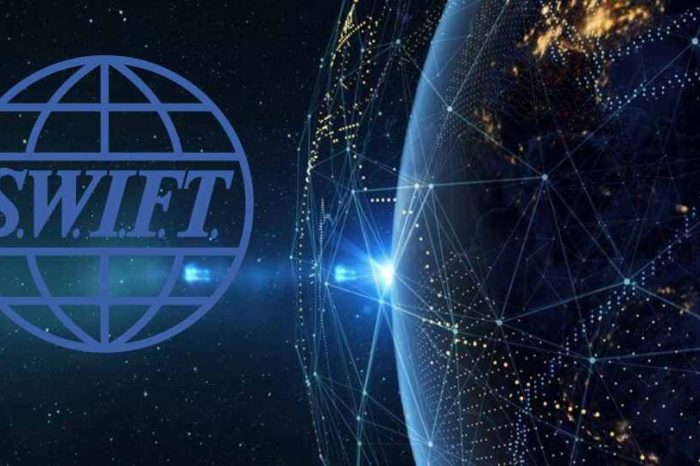Cyber threats keep evolving, and so should your defenses

Not all biological viruses are harmful, but the same cannot be said about digital viruses and other cyber threats. These malicious codes or programs only cause problems to the devices and networks they infect. Worse, their creators or perpetrators enhance them or purposely make them evolve to evade detection and prevention systems.
Cyberattacks are rapidly increasing, not only in their volume and sophistication. “Hackers have matured to a staggering point where they can now generate massive volumes of high-quality malware easily,” says cybersecurity expert James Lyne. Cybercriminals are relentless in their attempts to defeat cyber defenses and will stop at nothing until they achieve their goals.
Additionally, cybercriminals have already been acting like businesses and are somewhat collaborating. Criminal hacker gangs that conduct indiscriminate attacks sell the “outcomes” of their attacks to other cybercriminals. The data they get from their hack attacks, for example, are not that useful to them but valuable to others. As such, they go to black markets to sell the information to other cybercrime groups, such as those that specialize in data exfiltration.
To combat cyber threats, it is important for defenses to keep up with the advancement of the offenses. This catching up is not just about matching technological advancements of the attacks but also the strategies and tactics used.
The importance of security testing
How do you know if it is time to upgrade your security posture? Through security testing or penetration testing. The integrity and effectiveness of an organization’s security controls cannot be ascertained unless they are tested. Testing is necessary to find weaknesses or vulnerabilities and upgrade controls that are no longer effective in view of the most recent cyber threats.
It is not enough, though, to conduct testing once or even on a periodic basis. Given how aggressive and persistent cyber-attacks are now, any moment of vulnerability can lead to serious consequences. Typically, there are over a hundred thousand cyberattacks in an hour or more than 2,000 per minute. When it comes to mobile devices, an average of 24,000 malicious mobile apps are blocked daily by mobile app stores.
Devices are rarely free from vulnerabilities that can be exploited by threat actors, hence prone to overwhelming volumes of attacks. Traditional penetration testing cannot go toe to toe against these attacks in terms of frequency, aggressiveness, and sophistication. It makes perfect sense to take advantage of advanced cybersecurity testing technologies like automated breach and attack simulation (BAS) that enables the continuous scrutiny of security controls to avoid having any instance of a security weakness that can be breached by relentless hackers.
To emphasize, the right security testing technologies and methods are important to achieve an effective security posture. Even when it comes to security testing, organizations should choose the latest and most effective solutions like automated and AI-powered BAS, which is capable of simulating real threat actions to determine their impact on existing security controls. They can be configured to mimic complex attack scenarios like complex deceptive methods to bypass email filters and web application firewalls.
Other tools for security testing include web app scanners, web application vulnerability scanners, which examine web applications from the outside to find security vulnerabilities such as SQL injection, command injection, and path traversal.
Having adequate prevention and detection
There are several advanced tools and solutions used to prevent attacks and detect the presence of malicious software and the manifestations of an undetected attack. These include the following:
- Encryption solutions – These are the software tools that scramble data in forms that become unusable to parties that are not supposed to have access to it unless they manage to obtain the decryption keys. The latest and most dependable encryption technologies right now are AES, 3DES, RSA, Blowfish, Twofish, and RC4. For web services, it is advisable to always have SSL encryption. Organizations have to carefully choose the right security standards, though, to ensure efficient and not too cumbersome encryption.
- Firewalls – The traditional firewall may be practically dead, but there are new iterations of this technology that allow it to remain relevant. Next-generation firewalls, in particular, provide functions and features including application-level inspection and intrusion prevention.
- Packet sniffers – Also known as packet analyzers, packet sniffers are designed to examine data transmitted over the internet to determine if they are in accordance with the appropriate Request for Comments (RFC).
- Network security monitoring tools – These tools detect and analyze activities that pose potential security risks. They can aggregate and scrutinize security logs from various sources to detect potential issues and malfunctioning or weak security controls.
- PKI services – Public Key Infrastructure services are a combination of software, encryption tech, and other services that allow organizations to secure the communications and transactions they transmit through their networks.
- Managed security services – These are the services provided by managed security service providers (MSSPs), which supply security monitoring and management solutions including firewalls, virtual private networks, vulnerability scanners, and intrusion detection.
There are also comprehensive cybersecurity platforms designed to unify all security controls to ensure the more effective monitoring of threats and faster response to security incidents. They employ artificial intelligence to analyze the massive amounts of security alerts, notifications, and logs so that they can be sorted and presented according to urgency. Some alerts are also automatically dealt with, so the security team can focus on more important concerns that require more complex decision-making.
Additionally, advanced cybersecurity platforms integrate the MITRE ATT&CK framework and other security frameworks to harness the benefits of collaboration among the global cybersecurity community. Security frameworks provide everyone access to up-to-date information on adversarial tactics and techniques, the ways to detect them, mitigation recommendations, and other crucial details.
Ensuring effective mitigation and removal
The leading cybersecurity platforms typically come with threat or attack mitigation and removal functions. Organizations that are already using MSSPs or cybersecurity platforms with integrated security frameworks most likely already have access to effective mitigation, malware removal, and attack remediation protocols or procedures.
The United States National Security Agency (NSA) came up with a list of cybersecurity mitigation strategies. Some of the most notable points are summed up below.
- Come up with a comprehensive incident response and system recovery plan. This is the core component of effective cyber attack mitigation. Every organization should have a guide on what to do in case a cyberattack happens. Organizations are expected to have different response and recovery plans because of the varying nature of their activities and resources.
- Establish network access controls and a zero-trust system. It is important to have a system wherein users only gain access to services or resources that are needed for the task they are set to do. Broad-based categories for access are not advisable. A policy of least privilege is recommended.
- Ensure proper systems and configuration management. Organizations should have a proper accounting of all network devices, software, and digital assets. Their configuration should also be regularly checked, especially when there are changes in the organization and the hardware and software used.
- Update all software and adopt signed software execution policies. All software updates should be implemented as soon as they are available to have the latest security patches. Also, only run software with trusted certificates. This makes it easy to find the apps or software that are likely infected by malware or is the cause of vulnerabilities.
- Take advantage of modern hardware security features. Advanced functions such as the Trusted Platform Module (TPM), Unified Extensible Firmware Interface (UEFI) Secure Boot, and hardware virtualization significantly boosts an organization’s cyber resilience. They should be activated if they are not being enforced by default.
- Separate networks with app-aware protections. There are application-aware network defenses designed to deny access to malformed traffic and other anomalous content. Use these to segregate critical services, devices, and networks and proceed with safe mitigation and remediation.
In summary
The evolution of cyber threats is a constant with no end in sight. Organizations need to learn to adapt by also improving their defenses continuously. The cybersecurity community is always on the lookout for the latest threats and is formulating corresponding solutions. Businesses are advised to take advantage of these easily obtainable solutions along with best practices, guides, and collaborative cyber threat intelligence.

